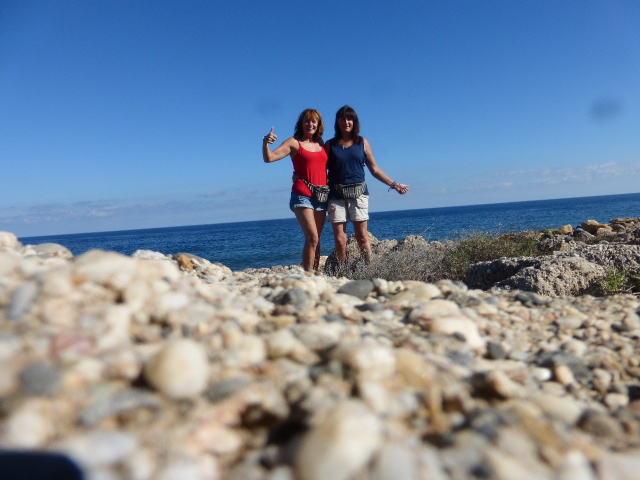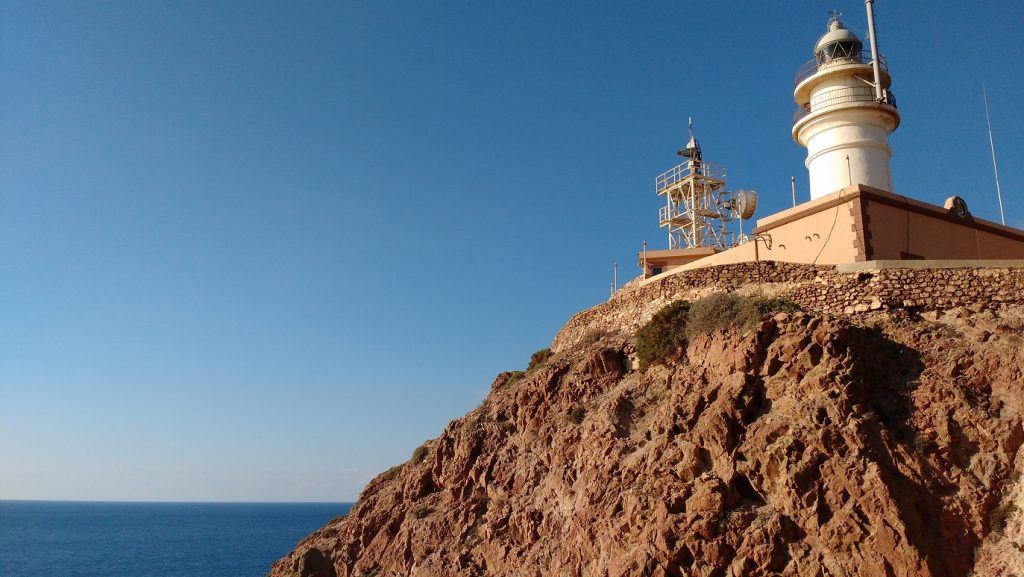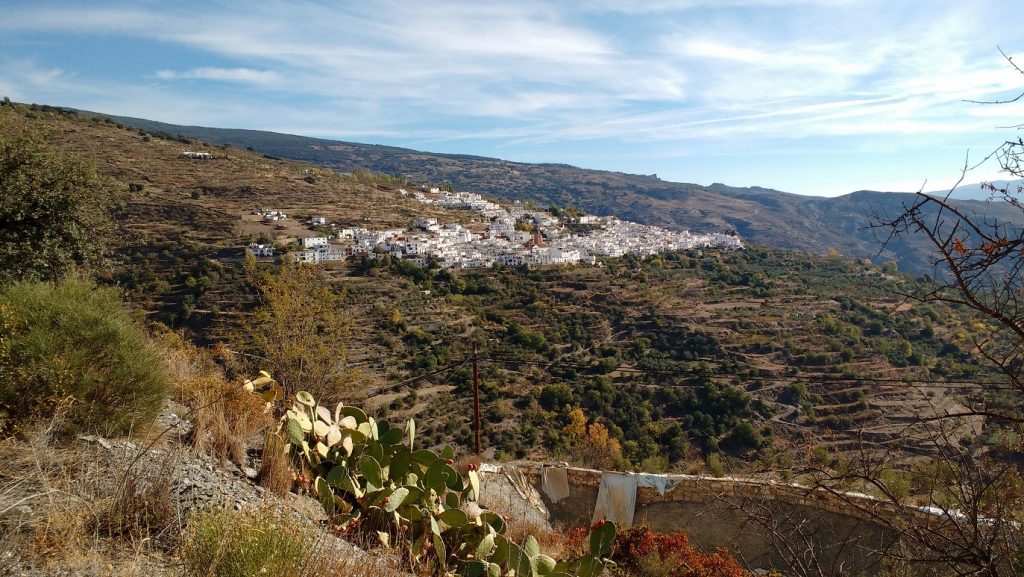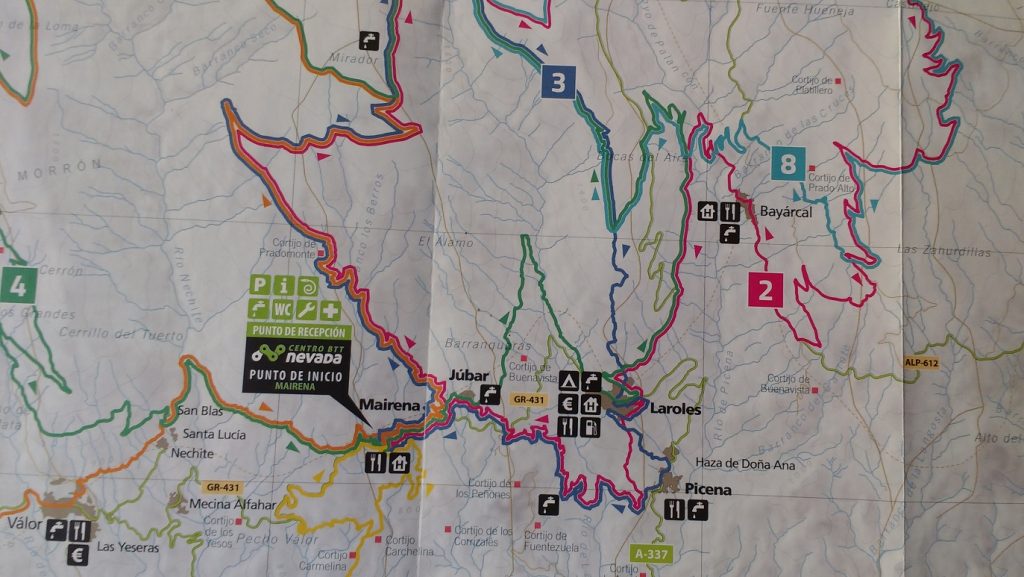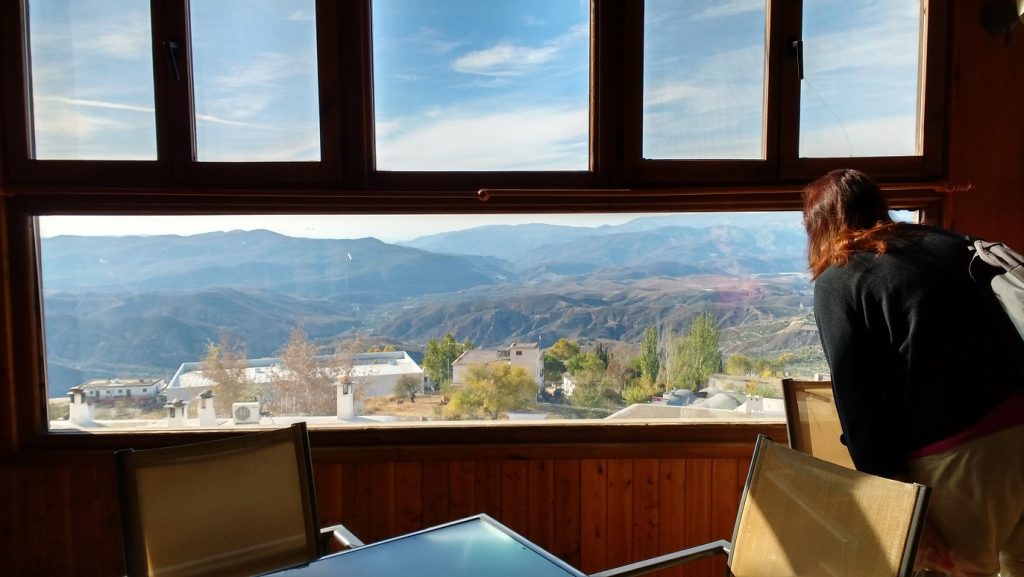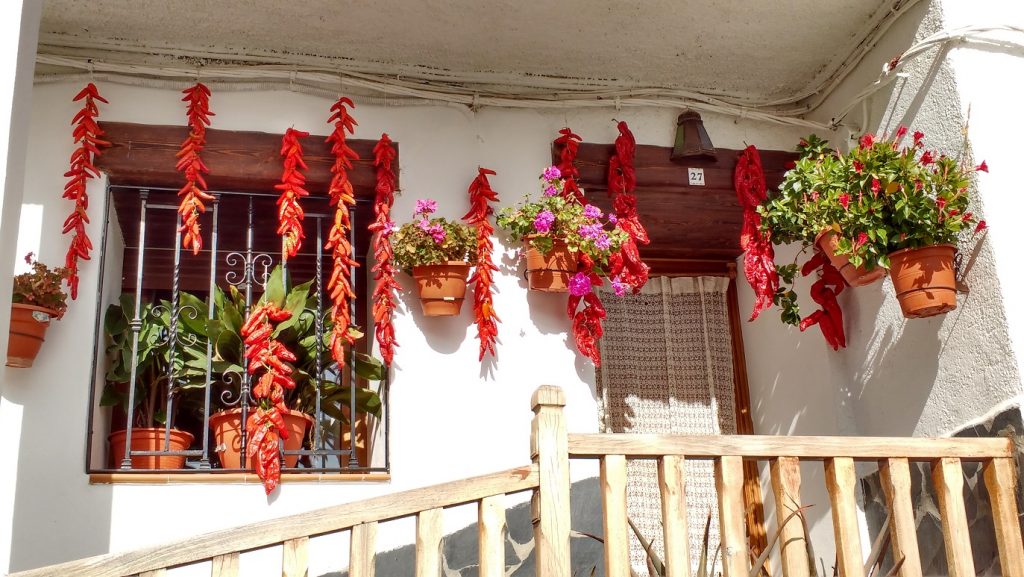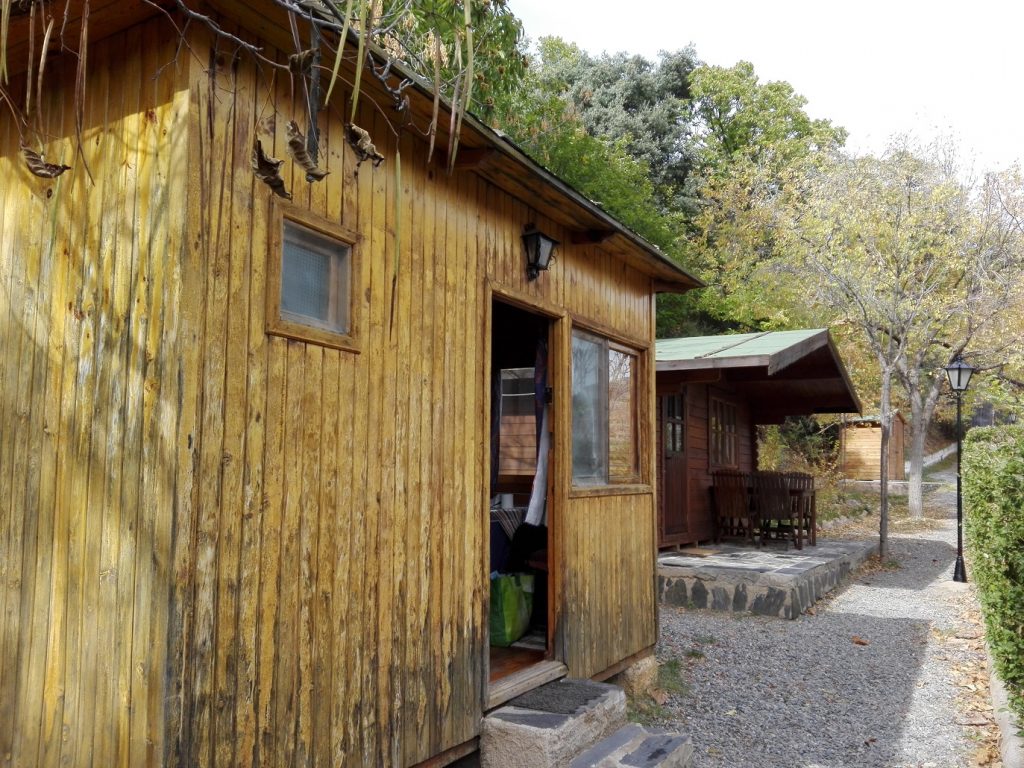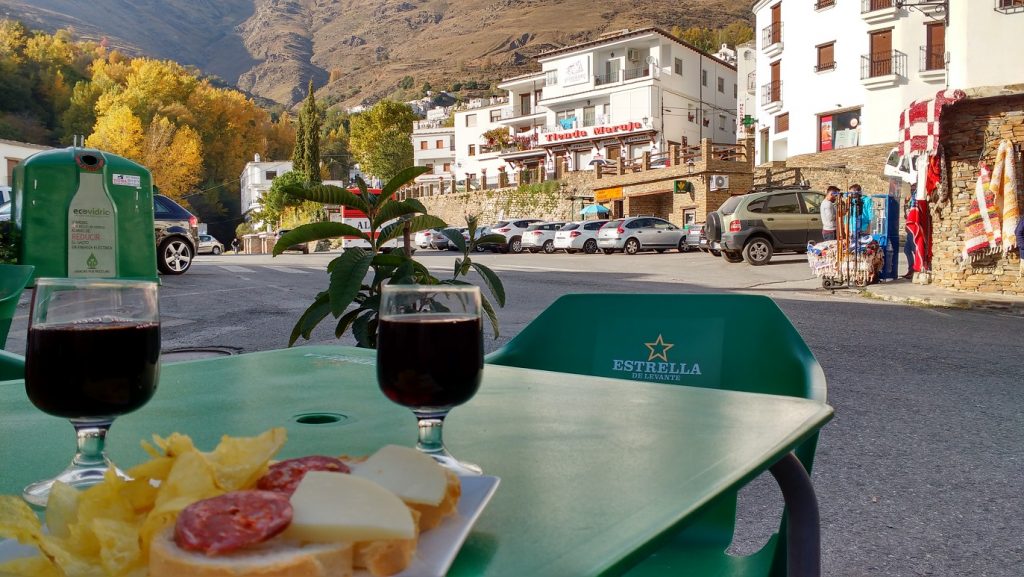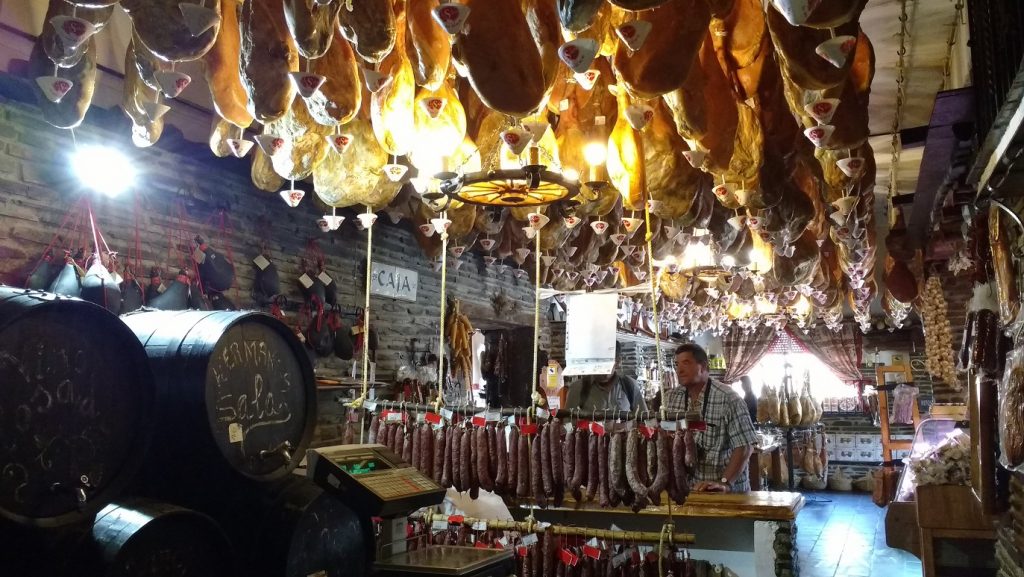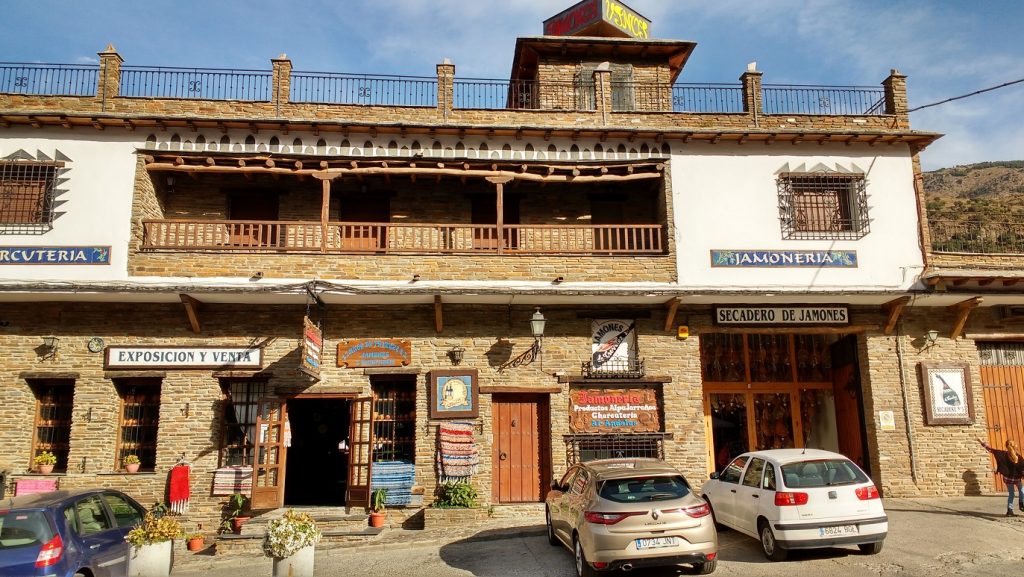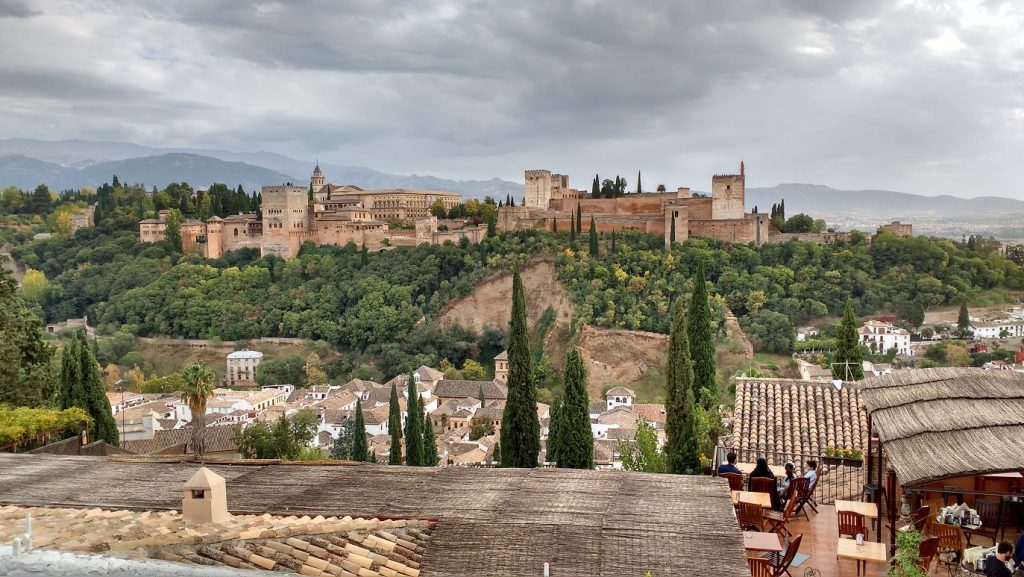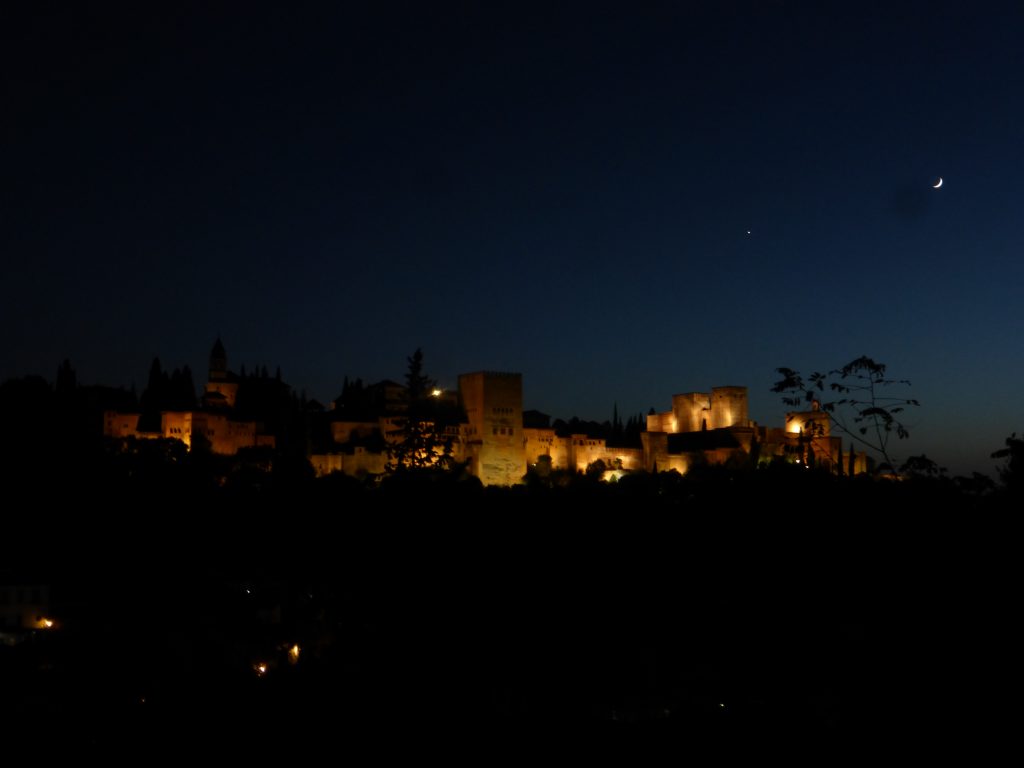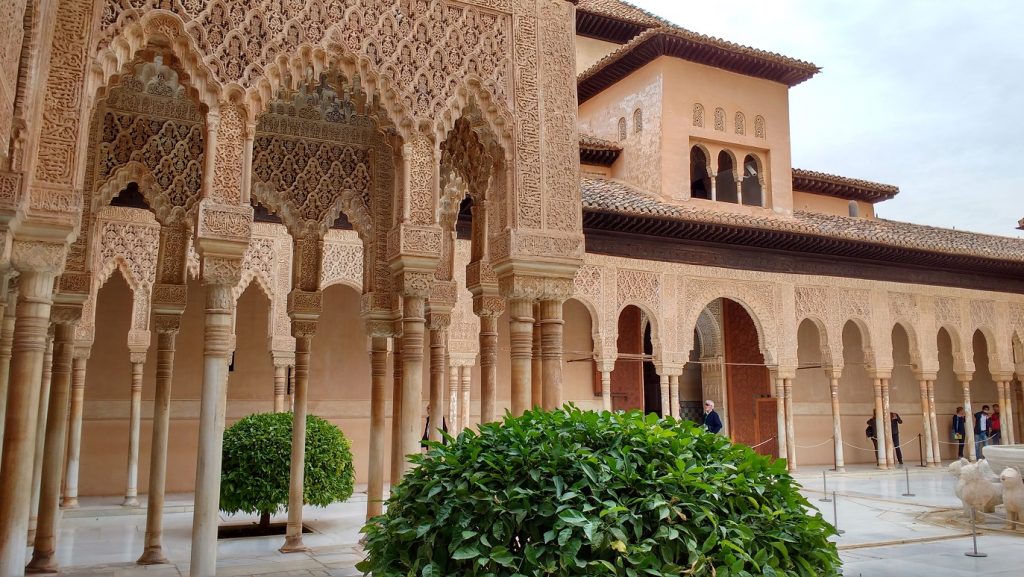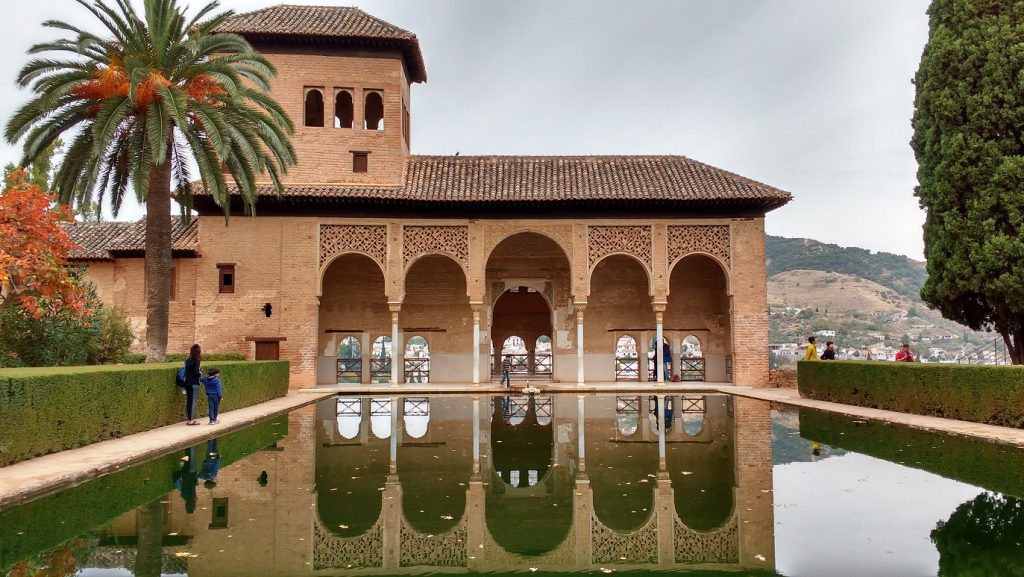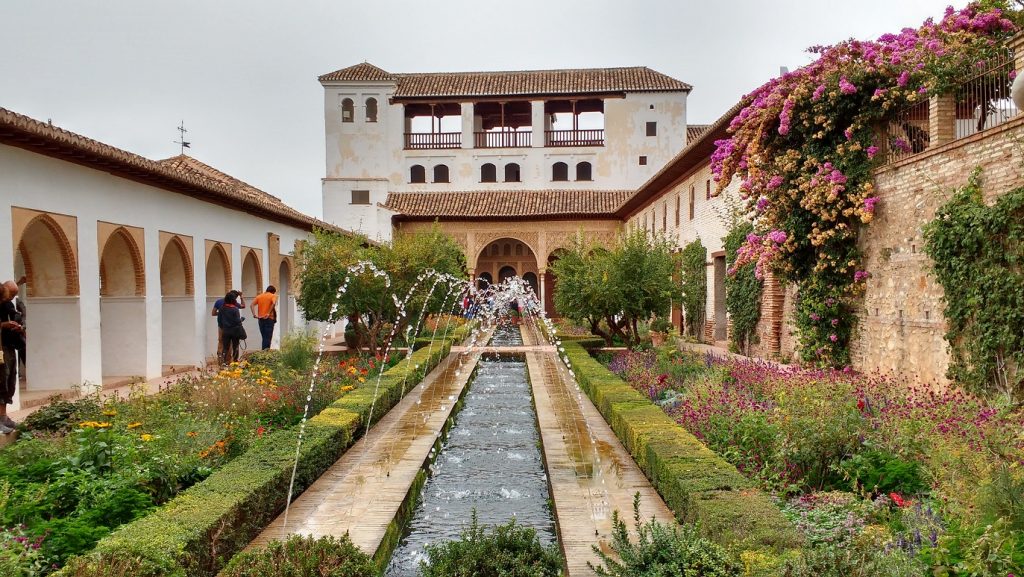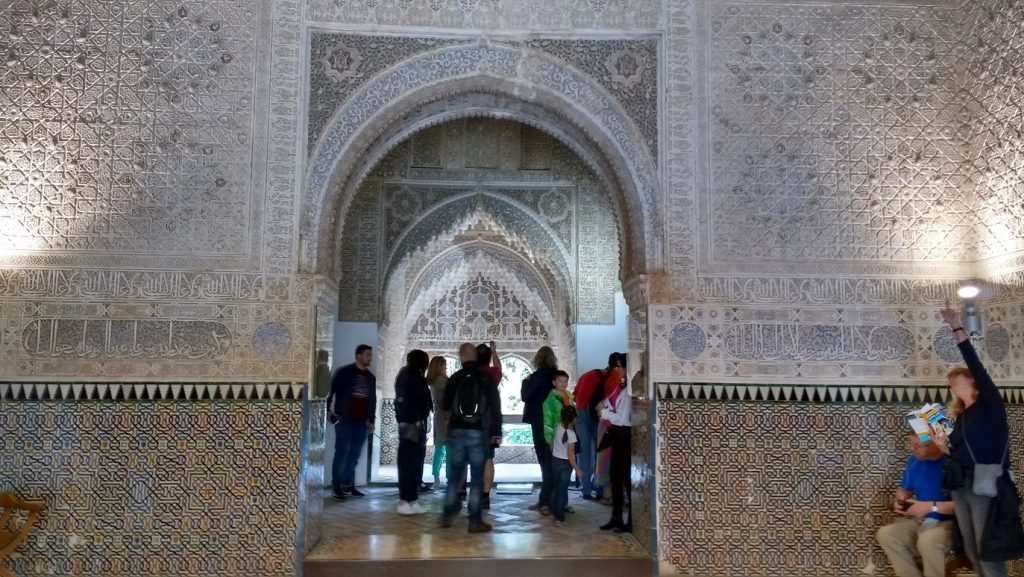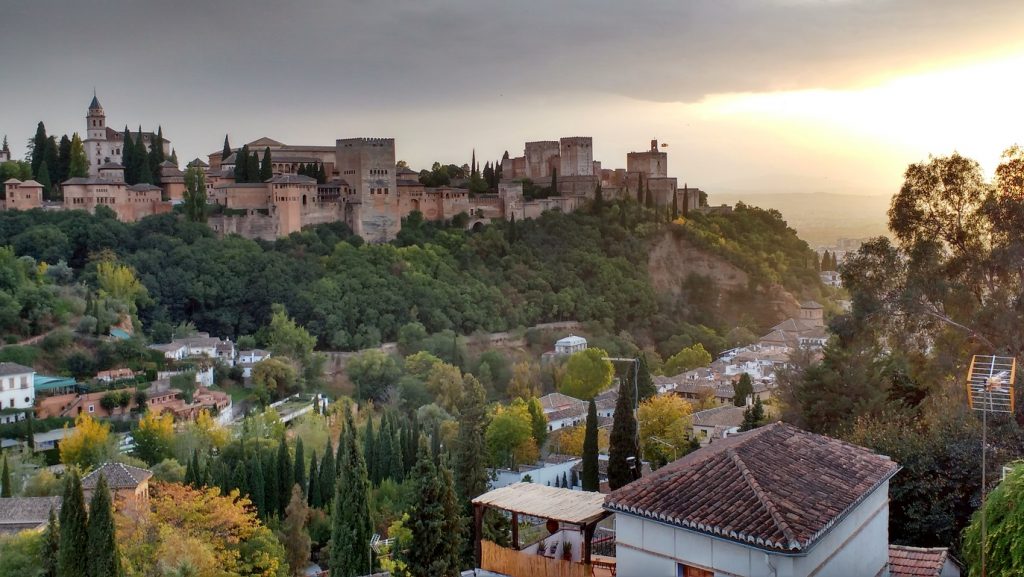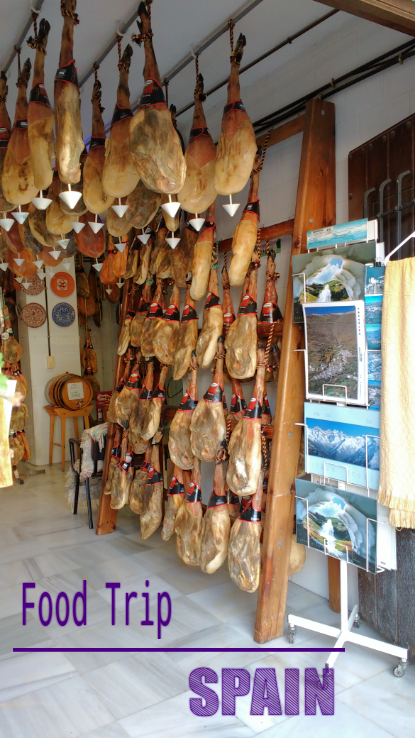Exploring the south of Spain on a Road Trip – Part 2
Leaving the small seaside town of San Jose behind we set off in Betty the Berlingo to continue exploring the south of Spain – our next stop was the Sierra Nevada and Granada.
We were now in the National Park of Cabo de Gata with its undeveloped coastline and deserted beaches.
The lunar like landscape in this region has been used in the past for many films – such as ‘The Good, the Bad and the Ugly’ and deeper in the interior there are even gold mines.
We passed some huge lagoons with pink flamingos rummaging around for whatever it is they eat in the mud (what is it about those birds that make them so lovable?) and then we drove up to the headland named Las Sirenas (the mermaids) where the lighthouse gleamed white against a cornflower blue sky.
La Alpujarra
After a brisk walk in a bracing wind we decided to break with what few plans we had and to head inland. A friend had texted the previous night and advised us to go up into the mountains of the vast Sierra Nevada where apparently there are 50 picturesque little white villages dotted around.
There are just two main routes across the Sierra Nevada and we chose the southerly route. Debs drove Betty steadily upwards from the coastal plain and into the mountains. The view altered as we rounded each of the hundreds of hairpins, from vast sweeping vistas rolling to the distant horizon, craggy, spiky mountain peaks, forests of dark pines or oaks and steep sided valleys.
Traffic was sparse, the roadside plummeted away below us in many places and all over, we could see the famous tiny whitewashed houses clustered in their little villages and surrounded by open space.
Laroles
We spent our first night in Laroles where we managed to track down a campsite. We had naively thought that we would have our pick of places to stay en route but as the owner at the Camping Alpujarras site explained, we had managed to start our #roadtripSpain at the end of the hotel season and he would only be open for one night more. (click here for latest prices at the Alpujarras site)
We also had our first encounter of many with road sweepers and government workers who luckily were always around whenever we got lost. This time, our guy in his white van didn’t just point us in the right direction to the campsite up on the mountain; he jumped in his van and led us there.
It was strange being the only campers on the site, virtually in the middle of nowhere and surrounded by an imposing pine forest. We trekked down into the village and then on our return Debs cooked us supper over her little gas cooker – before we headed inside the bar for some warmth and some wifi.
The next day we continued our journey across the Sierra Nevada, stopping off at tiny little villages with coffee shops and bars on amazing viewpoints – in fact every part of every village was an amazing viewpoint – even the public gym equipment was sited high up on bluffs of rock.
One peculiar feature of the little white-washed houses was their flat roofs and the tall stone chimneys. We asked why flat roofs in a region which had heavy snow fall every winter – why not steep roofs? We were told that historically the flat roofs were used for drying red peppers, chillies and herbs – with villagers having to climb up daily during the winter to sweep the snow away so that the houses don’t collapse. The houses in each village nearly all face south – perfect for catching the warmth of the winter sun and the dry cold air is perfect for drying hams and the goat cheeses.
We rocked up for our next overnight stop in the highest village in Spain.
Trevelez
Checking in to the campsite – Camping Trevelez we opted to pay the extra euro each for a wooden cabin (garden shed) rather than our tent and because the night time temperatures were plummeting at that altitude http://www.campingtrevelez.com/?lang=enwe also opted for an extra euro for a heater.
I like to think that this wasn’t a case of opting out but more one of survival. We took a long hike down to the village where we sat in the village square soaking up the bright sunshine and visited some of the many delicatessens with their hams and goats cheeses. We were in our element here – the whole village smelt like one giant ham and plate loads of the top quality meats were handed out as free tapas with our beer.
We wandered around some of the places where the hams are cured and marvelled at the sheer number of them hanging from ceilings. I apologise to any vegetarians reading this post, but if you want a top quality ham then this is the place in Spain to come to.
That night we ate out in the bar of our campsite and chatted to some other travellers who were in the region for the hiking and the scenery, before deciding to make the most of our garden shed cabin and having an early night.
Around the Sierra Nevada and Granada
The following day we dropped down in altitude to the city of Granada which lies in the foothills of the Sierra Nevada. It was my second time here having had a flying visit some years before but I was keen to explore this historic city properly.
Despite our chosen campsite being well signposted Debs and I still drove around and around for half an hour before we realised that the flags on the roadside were the entrance gate. We had chosen a municipal site for the safe/cheap parking and its close proximity to the bus route into the centre of the city.
The first thing to organise were our tickets to the Alhambra Palace. The tourist office couldn’t help us because they had sold out for the next 10 days but the very friendly guy at our reception desk at our campsite managed to get hold of tickets for us in a couple of days time. So, we confirmed our stay for three nights in our ever-so-cosy tent and thought about what to do in the meantime.
Finding things to do in Granada is not a problem.
Walk, shop, eat, repeat. Walk, shop, eat, repeat. Marvel at the wonderful views, architecture and culture and walk, shop, eat, repeat….
But first, let me tell you about the Alhambra is a large complex containing several palaces which were constructed over a period of time for different rulers.
Set on top of the hill in an imposing position above the city, the first palace was started by the Moors in 1237. Several centuries later in 1492 the complex was surrendered to the Catholic monarchs. It is spectacular at night – its floodlit form dominates the skyline. It sprawls along a ridge high above the town, and consists of several distinct sections which can take at least three hours to wander leisurely around.
The Alhambra is full of Arabic architecture with reflective pools of water and fountains, intricate carvings cover walls and ceilings and it has beautifully landscaped gardens. There is an ancient stone well surrounded by lions which I believe is only one of such statues in the Islamic world to feature living creatures (it is forbidden to portray living creatures in pictures and carvings in Islam) and there are many keyhole shaped doors and fret-worked windows offering glimpses over the city below.
The stone dome roofs of the hamman (steam baths) contrast with the square palace which now houses the museum of fine arts. The fortified castle (the Alcazaba) with its tall towers dominates one end of the ridge and there is a huge area where you can see excavations of the foundations of the soldiers’ quarters.
The whole compex is set on the wooded hillside which is interesting in itself to walk through – and as you descend back to the narrow streets of the old town you pass intriguing shops set into the cliffs.
We visited the Alhambra on our third day in the city – but as I have already hinted at, there is so much more in this city.
If you don’t already follow me at www.scarletjonestravels.com I would love it if you would click on the link to make sure that you receive my next blog post.
In my next article I will tell you about accidentally discovering THE best viewpoint of the Alhambra at night totally free of the hordes of tourists, unintentionally wandering through a party of the cave dwellers who squat in caves high above the town and the highlight of Granada for us, the night that Debs and I and thirty other people were moved to tears by a passionate flamenco show.
Details of our road trip around the south of Spain, Part 2
San Jose – Cabo de Gata – Laroles – Trevelez – Granada
Laroles – Camping Alpujarras. We pitched our tent here in the forest. The kitchens weren’t open as the site was closing down the very next day but we spent the evening in the little bar with the most stunning picture window and views across the mountains.
Trevelez – Camping Trevelez – we could have camped but as the night time temperatures were plummeting we opted instead for a cosy little wooden cabin. We ate good wholesome food in the bar in the evening and chatted to some other travellers.
Granada – Camping Sierra Nevada – On the surface this campsite was great – the toilets and showers were spotless, the site was well maintained with mature trees and shrubs and it was perfectly located for the city of Granada on a very efficient bus route. Sadly, the extras, or the lack of them let the site down. There was a bar with weak wifi BUT every electric point was taped over. When I asked if I could charge my lap top the staff declined and told me that they were nothing to do with the campsite. That shouldn’t have mattered but we were drinking there. The site would charge our mobile phones at reception for a fee – there was no way I was going to leave my lap top charging there – but as I had a deadline to reach, I had to resort to sitting on a wooden bench in the dark, damp and freezing cold with my laptop plugged in behind the drinks vending machine. The final straw was when we left the site the computer system had (allegedly) gone down and we could only pay by cash. We scraped together enough euros to pay our bill but we then had problems once we were en route to our next stop as we couldn’t find an ATM and we needed fuel. If you want to go a little bit more upmarket you could stay in one of the motel rooms
The Alhambra – if possible buy your tickets in advance but if the tourist office has sold out, check whether your hotel, hostel or campsite can get hold of any for you.
La Alpujarra – make sure that you try the goats cheese and the Serrano hams
Trevelez – the handmade rugs are amazing value and unlike any others that I have seen. Not for the first time I (almost) wished that I had a home of my own
For the latest prices at the camping sites in the Sierra Nevada click here
You can read the other articles in this series at the following links and if you would like to know more, the Lonely Planet has a series of books on the south of Spain and Andalucia: Check out their library here
- Stage 1: Alicante to San Jose, via Cartagena, Bolnuevo & Mazarron
- Stage 2: This article: Cabo de Gato, the Sierra Nevada & Granada
- Stage 3: Granada & Ronda
- Stage 4: Cadiz & Jerez
- Stage 5: Seville
- Stage 6: Cordoba, Cuenca & Teruel
If you enjoyed this article and you would like to share it, feel free to pin this image
